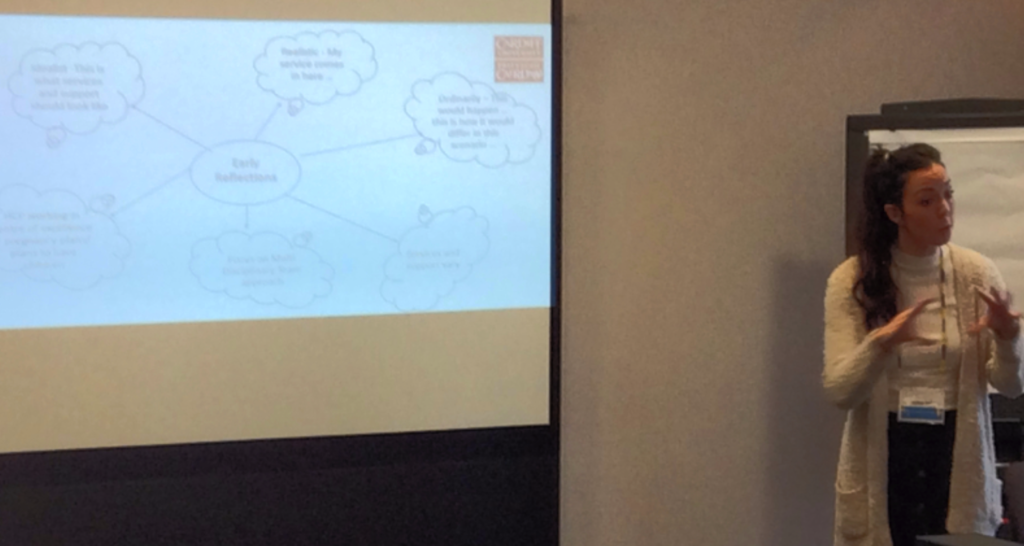This qualitative study explores visual timelines and their effectiveness over the telephone and highlights the need for additional visual methods to be explored within other contexts and settings.
STAR Family Study
As a research associate within CTR and DECIPHer and with an interest in research involving women and care, I joined the ‘The STAR Family Study’ led by Dr Rhiannon Phillips, a study exploring the needs of women with Autoimmune Rheumatic Disease (ARD) throughout their journey to motherhood.
Woman-centred approach
We expected women’s stories to be personal, sensitive, and evocative, and we adopted a woman-centred approach and ethos for the study. With this in mind, we used timeline-facilitated interviews, a qualitative data collection method used with vulnerable or marginalised groups to help redistribute some of the power imbalance that can occur in standard semi-structured interviews. Visual timelines can encourage participants to create a visual representation of their chronological journey and to share their lived experiences in their own way. This can provide an aspect of ownership over their narratives, a feature considered of high importance in the STAR Family Study.
Novel ways of using visual timelines
Timeline-facilitated interviews typically take place face-to-face, but the population of interest in the STAR Family Study was a potentially hard-to-reach group, geographically dispersed across the UK and resulting in some interviews taking place over the telephone. There was no extant literature reflecting on the feasibility of using visual timelines over the telephone, so with support from Dr Rhiannon Phillips, Dr Aimee Grant, and Dr Denitza Williams, I sought to address this gap. This led to the following research questions:
- How were the visual timelines used by women and researchers in the telephone interviews (e.g., what visual form did they take, who was involved in generating the timelines, were the timelines shared with the researcher and if so when)?
- What impact did their use have on the generation of data in terms of the interviewee-interviewer dynamic and formation and sharing of women’s narratives?
- What impact did visual timelines have on the quality of data produced in telephone interviews in terms of narrative length, detail, and coverage of sensitive and emotive topics?

Our findings
Findings indicated that timeline-facilitated interviews over the telephone worked effectively in the STAR Family Study, generating detailed narratives of women’s personal lived experiences and encouraging ownership and autonomy over interview direction. Methodological data analysis elicited six themes:
- Participants use and adaptation of the timeline tool
- Timeline exchange at the end of the interview (returning completed timelines to the interviewer)
- Framing the interview: emphasizing that women are in control
- Jumping straight into narratives
- Taking a lead (on interview direction)
- Disclosing personal and sensitive experiences.
Timeline return
Timeline exchange was an interesting and unexpected finding where non-return of the timeline meant that visual data could not be used to prompt or query during the interview or during analysis. However, within our women-centred approach, participants’ autonomy and control was prioritised over mandating timeline return, which ultimately altered an aspect of the data generation process. Understanding and balancing these implications will be important when considering the use of timelines in the context of a different study.
Implications of study results
Implications of this methodological approach have become more apparent during the current COVID-19 pandemic, where social distancing restrictions have necessitated remote interviewing alternatives (i.e. telephone, Zoom, WhatsApp, Skype). Our results emphasise that visual timelines were effective over the telephone and highlighted that other visual methods need to be explored within other contexts and settings. Building an evidence-based for how we can still generate detailed narratives whilst working remotely could have a significant impact on how we think about generating qualitative data in the future.

